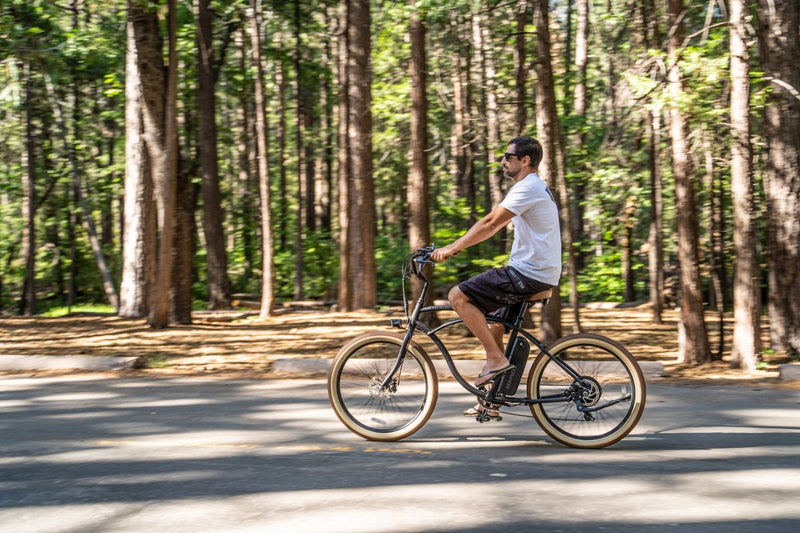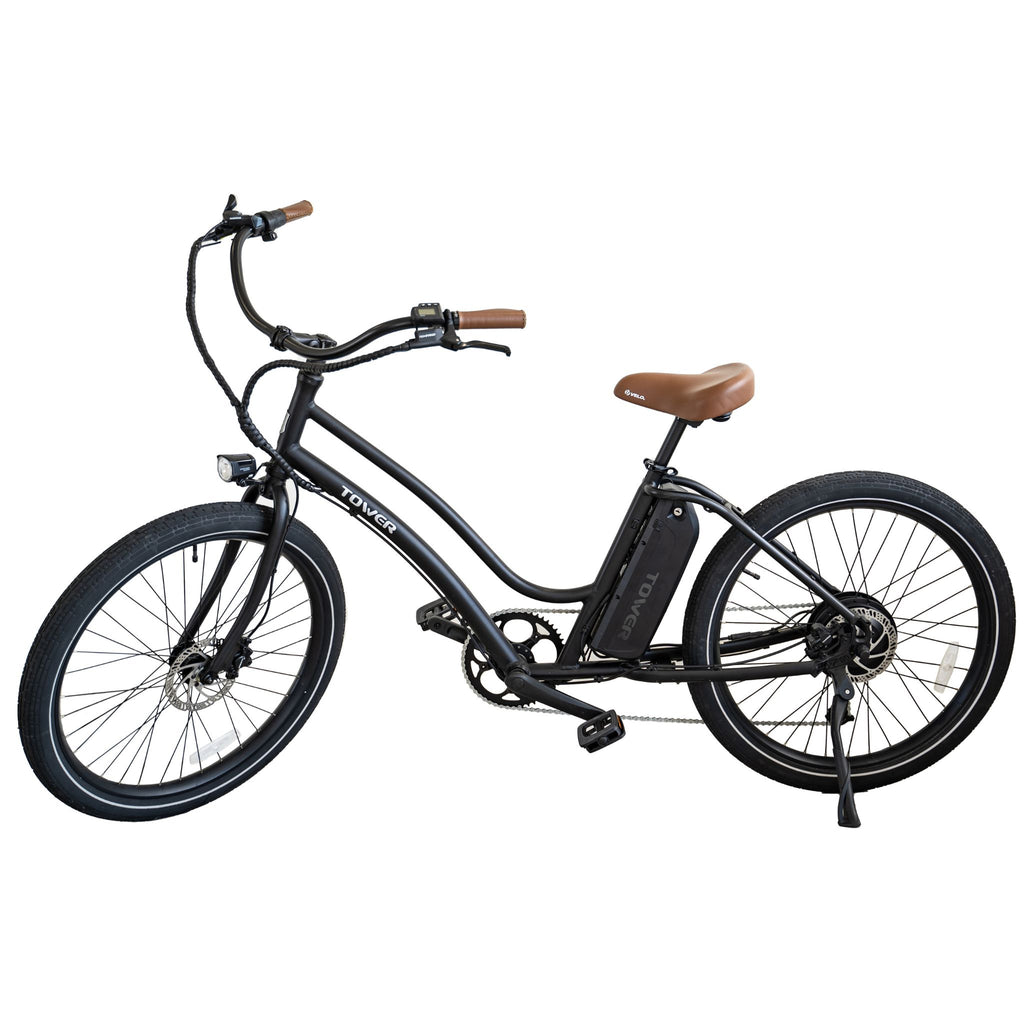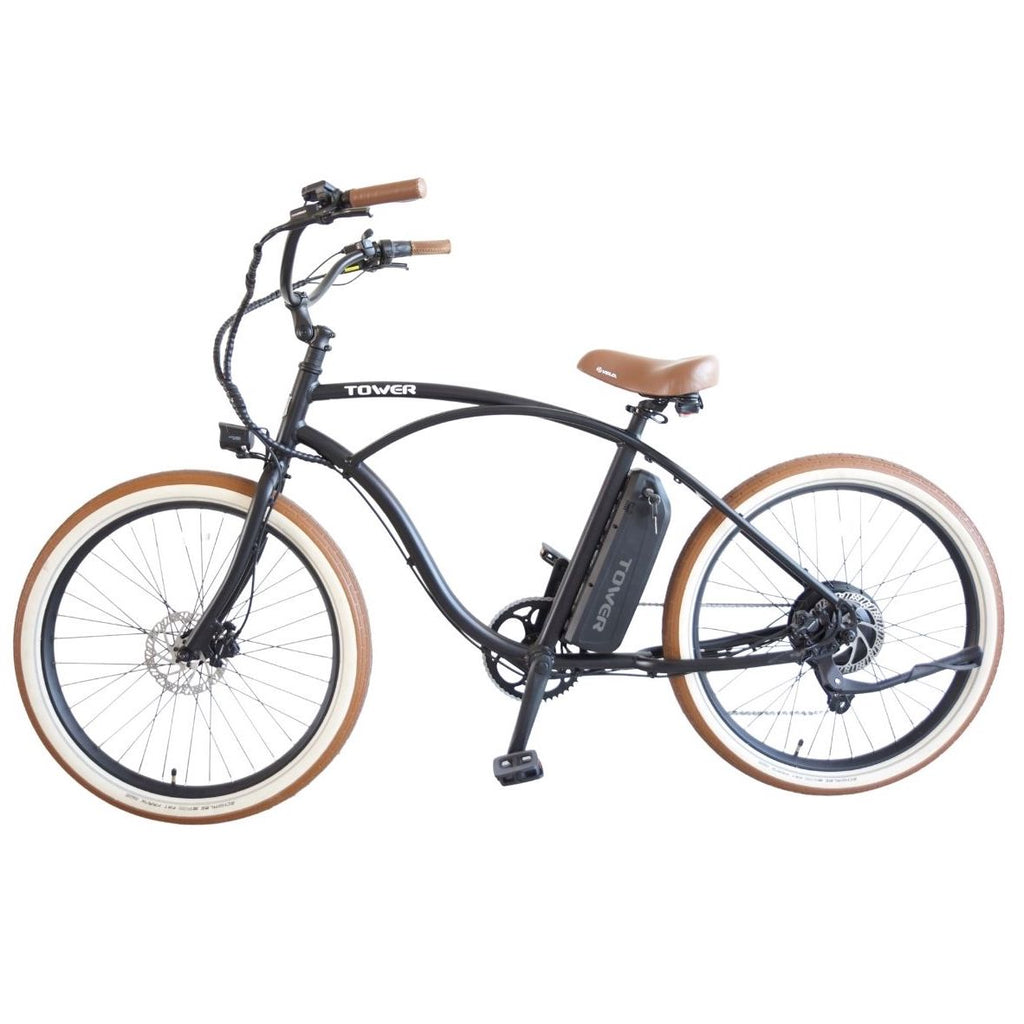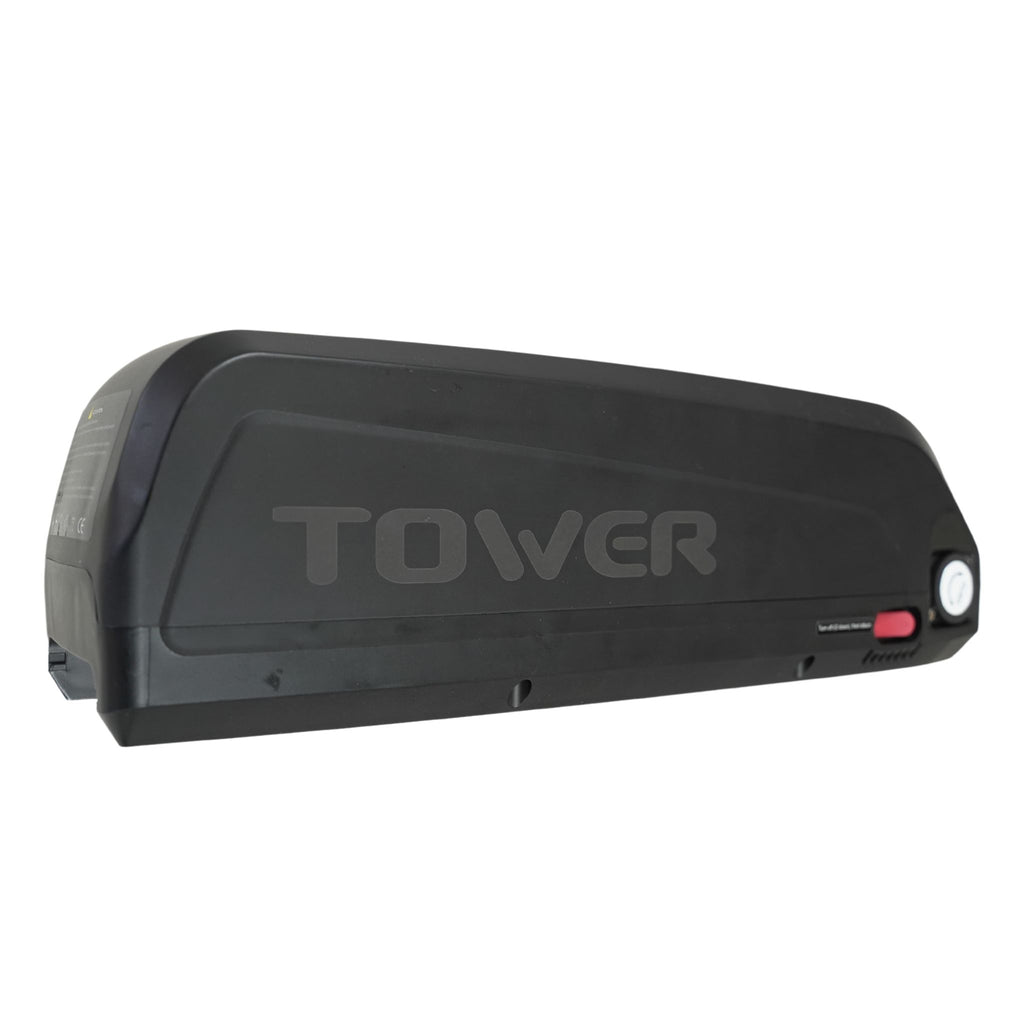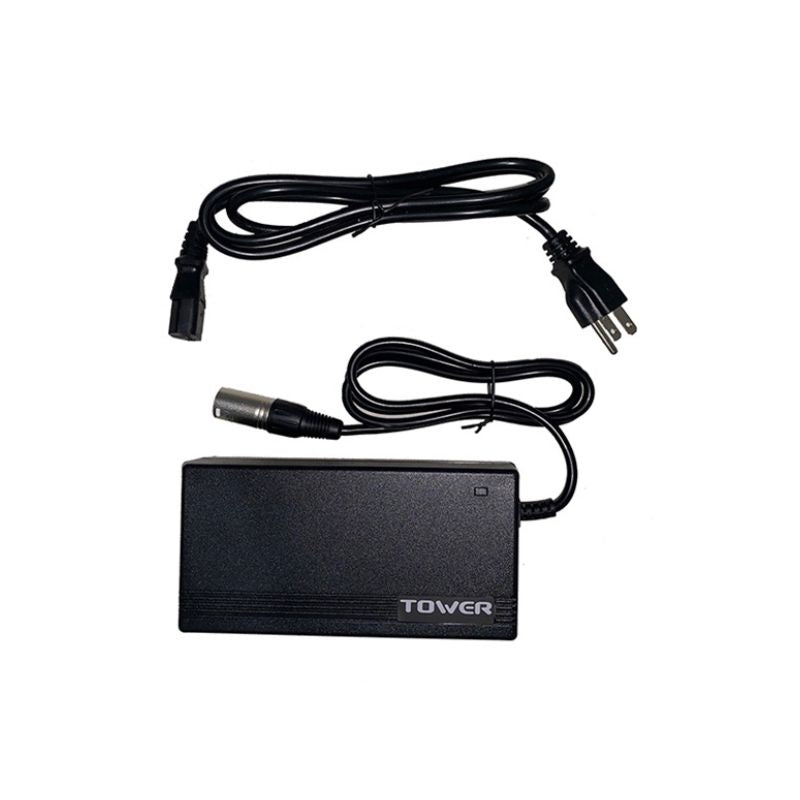Your Tower Beach Bum V2 or Beach Babe features high quality and responsive hydraulic disc brakes. But what are hydraulic brakes and how do they differ from traditional brakes?

Most traditional brakes use a cable to accurate the brakes and make them close onto the braking surface. With this traditional mechanical brake style, your braking power is linked to your hand strength, as you are manually pulling the brake cable. Hydraulic brakes are different in that they work closer to a motorcycle or car. The brakes have a fluid system that is pressurized and sealed from the outside. When you squeeze the lever, it changes the fluid pressure, pushing the brake pads to close onto the braking surface. This takes the work away from your hands and lets the brake lever do all of the work for you. Another advantage hydraulic brakes have over mechanical brakes is they require less regular maintenance (they still require maintenance, but not as often).
Mechanical disc brakes move a single piston against the brake rotor, which then pushes against a fixed brake pad, making the bike stop. But as the brake pads wear, the piston has to move further to stop the brake rotor. This combined with the mechanical cable stretching over time, they will need to be readjusted frequently in order to continue having reliable braking power. For hydraulic disc brakes, there are at least 2 or more pistons being pushed at an equal rate from both sides of the rotor. Because the pistons push out at equal rates, they require less adjustments as they are sort of “self centering”.
Now, this is not to say that hydraulic brakes do not need any sort of maintenance. The two main things that need to be done to hydraulic disc brakes are replacing the brake pads when they get worn out and the hydraulic system needs to be bled from time to time. In addition to this, after a bleed or brake pad swap, the brakes do need to be adjusted to make sure they are not rubbing on the brake calipers. We will outline below how to perform this maintenance and what tools you will need!
Everything DIY E-Bike Repairs
Homepage: eBike Repair Guide
eBike Repair Basics & Assembly
- eBike Specs and Walkthrough
- Tower eBike Serial Numbers
- Recommended Tools eBike Repairs at Home
- eBike Operation Guide
- Initial Build of a Tower eBike
- Tower eBike Torque Specs
- eBike Care and Maintenance
- Quick Reference eBike Repair Guide
eBike Brake System Service Guide
- eBike Hydraulic Brake System Introduction
- How to Adjust an eBike's Hydraulic Brakes
- How to True an eBike Rotor
- E-Bike Brake Rotor Install
- Brake Pad Install for E-Bikes
- How to Resurface eBike Brake Pads and Rotors
- How to Bleed Hydraulic Brakes on an eBike
eBike Drivetrain Service Guide
- How to Clean Your eBike Drivetrain
- Shifting Adjustment on an E-Bike
- Electric Bike Shifter Cable Install
- How to Install a New Chain on an eBike
- E-Bike Derailleur Installation
- Replace the Shifter on an E-Bike
- Replace an Electric Bike Cassette
- Crankset Install on an E-Bike
- E-Bike Derailleur Hanger Adjustment
- Installing Pedals on an Electric Bike
eBike Wheels & Tire Guide
- Flat Tire Repair on an Electric Bike
- New Tire Install on an Electric Bike
- Rear Wheel (with Hub Motor) Removal Guide
- How to True E-Bike Wheels
- Electric Bike Spoke Replacement
eBike Electric Repair Guide
- E-Bike Electrical System Overview
- Intro to Electrical Troubleshooting an eBike
- Methods of Electrical Troubleshooting an eBike
- Electric Bike Error Codes
- Electric Bike Battery Services
- Electric Bike Motor Issues
- E-Bike Will Not Power On
- Troubleshooting Pedal Assist on an E-Bike
- No Throttle Power eBike Troubleshooting
- E-Bike Does Not Pedal Assist or Throttle
- Intermittent Power Loss While Riding an eBike
Miscellaneous eBike Service Guide









